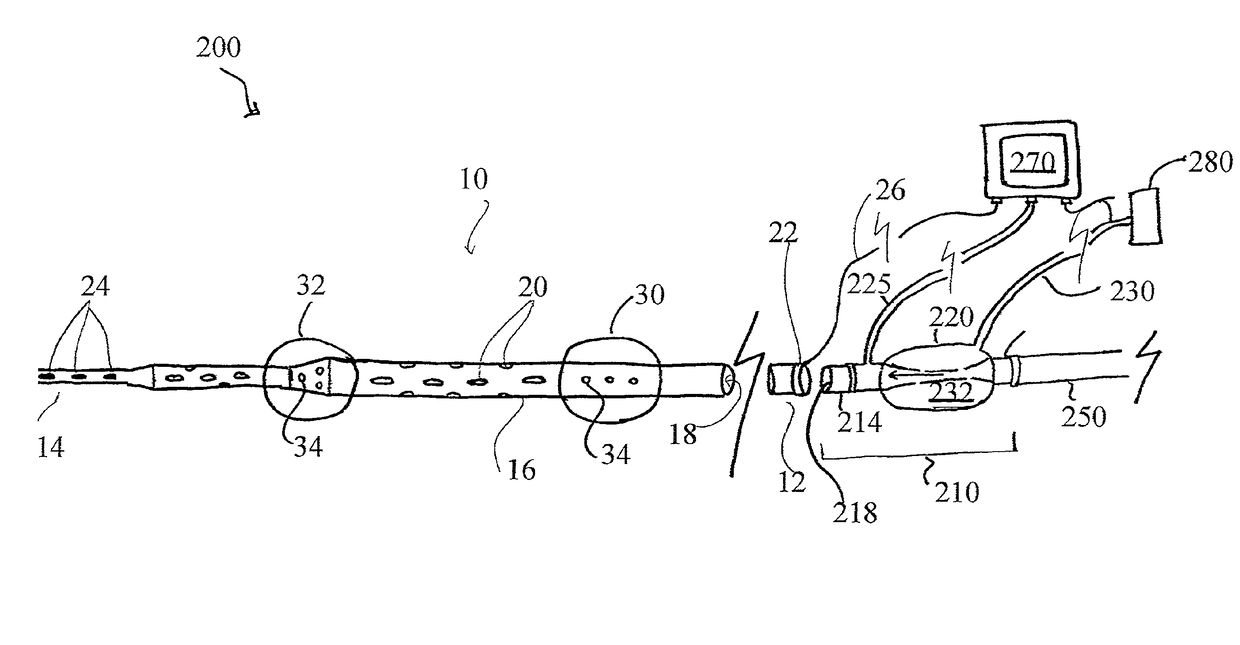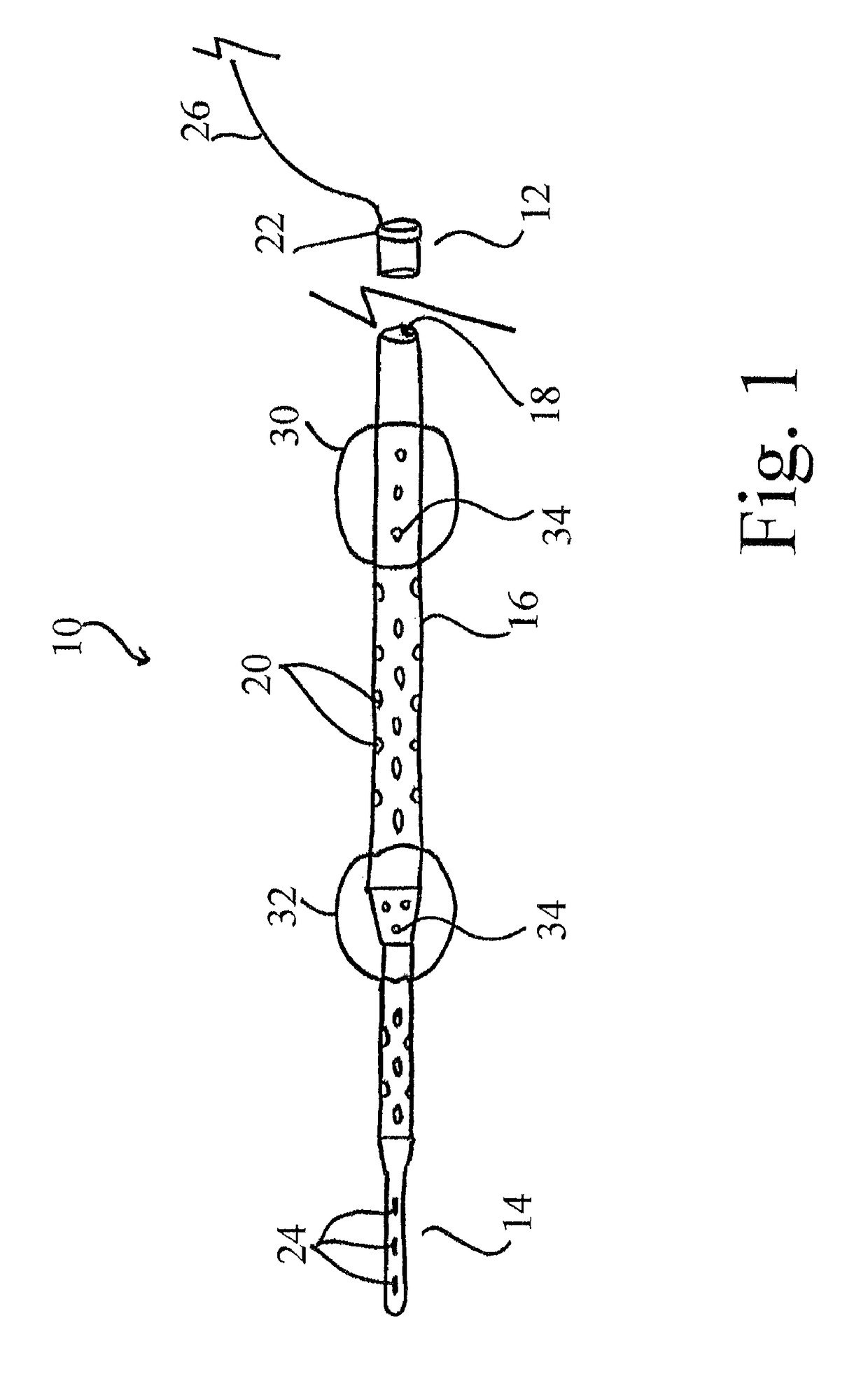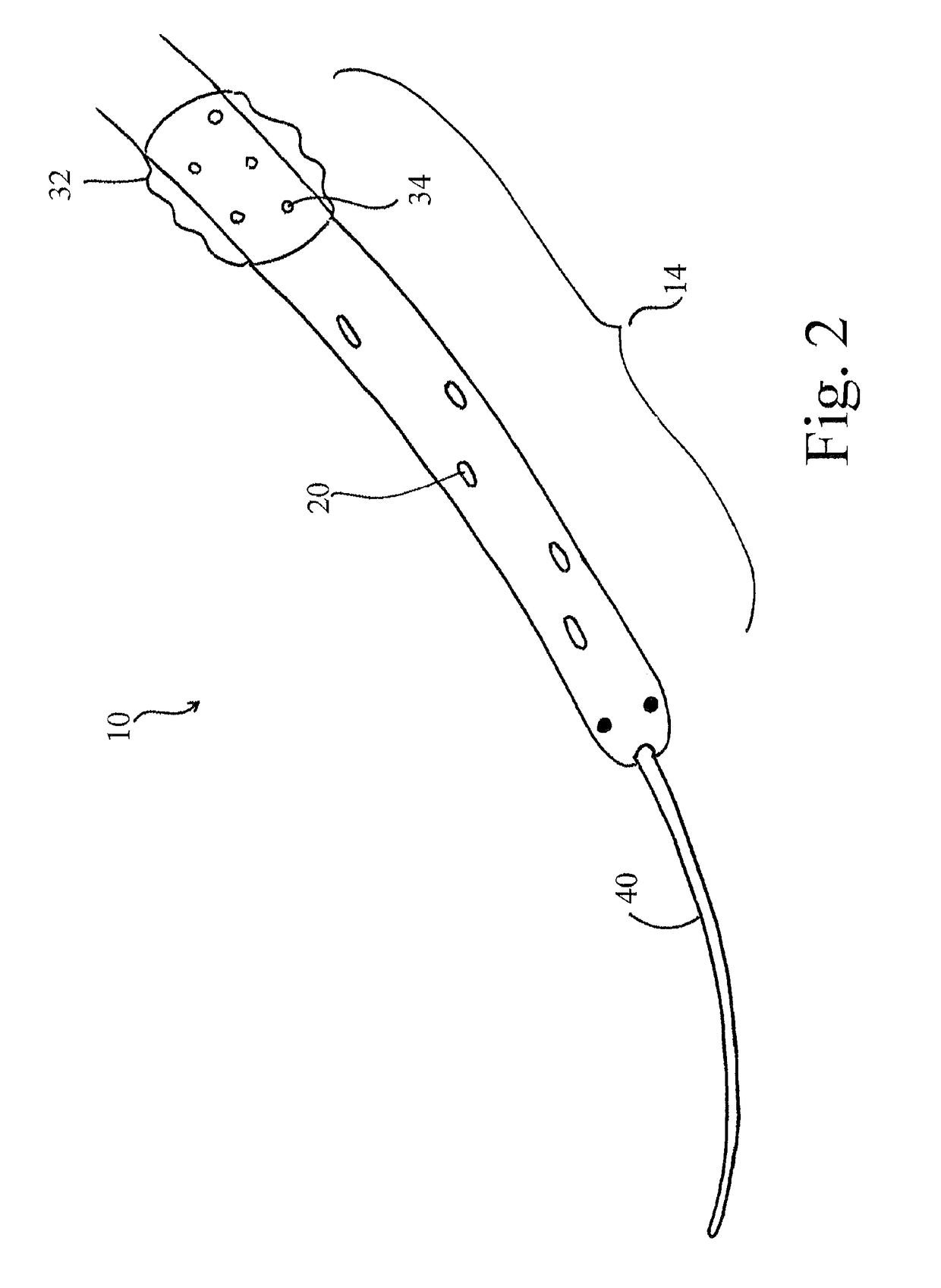Systems and methods for selective auto-retroperfusion along with regional mild hypothermia
a technology of auto-retroperfusion and regional mild, applied in the field of system and method for selective auto-retroperfusion along with regional mild hypothermia, can solve the problems of increased risk of additional stroke(s), and increased mortality and morbidity rates, and achieve the effect of reducing the interior diameter
- Summary
- Abstract
- Description
- Claims
- Application Information
AI Technical Summary
Benefits of technology
Problems solved by technology
Method used
Image
Examples
Embodiment Construction
[0057]Reference will now be made to the embodiments illustrated in the drawings and specific language will be used to describe the same. It will nevertheless be understood that no limitation of scope is intended by the description of these embodiments.
[0058]The devices, systems and methods described herein provide for a bridge therapy that is capable of supplying a patient's own oxygenated arterial blood to the compromised penumbral region of the brain via cerebral pulsatile venous retroperfusion. In this manner, the devices, systems and methods described herein facilitate the provision of oxygen-rich blood to the penumbra and thereby extend the window during which the penumbral cells remain viable. Extending the window of viability of the penumbra allows for the use of several new therapies for the treatment of stroke including, without limitation, the delivery of neuroprotective agents and thrombolytic drugs to the cerebral venous system as the agents and drugs will be allowed a s...
PUM
 Login to View More
Login to View More Abstract
Description
Claims
Application Information
 Login to View More
Login to View More - R&D
- Intellectual Property
- Life Sciences
- Materials
- Tech Scout
- Unparalleled Data Quality
- Higher Quality Content
- 60% Fewer Hallucinations
Browse by: Latest US Patents, China's latest patents, Technical Efficacy Thesaurus, Application Domain, Technology Topic, Popular Technical Reports.
© 2025 PatSnap. All rights reserved.Legal|Privacy policy|Modern Slavery Act Transparency Statement|Sitemap|About US| Contact US: help@patsnap.com



